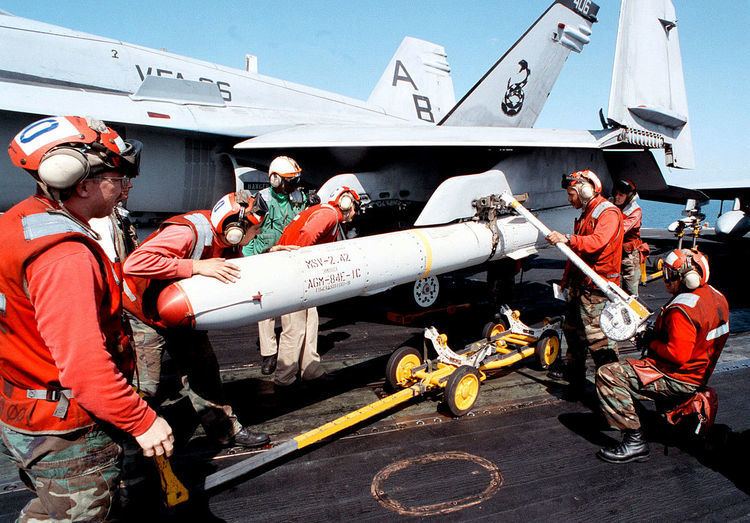Place of origin United States Used by U.S. Navy Designer Boeing | In service 1990 - 2000 Wars Gulf War, Bosnian War | |
 | ||
Type Air-launched cruise missile | ||
The AGM-84E Standoff Land Attack Missile (SLAM) was a subsonic, over-the-horizon air-launched cruise missile that was developed by Boeing Integrated Defense Systems from the McDonnell Douglas Harpoon antiship missile. The SLAM was designed to provide all-weather, day and night, precision attack capabilities against stationary high-value targets.
Except for new technologies in the guidance and seeker sections, which included a Global Positioning System receiver, a Walleye optical guidance system, and a newly developed Maverick missile datalink, all of the missile hardware came directly from the Harpoon missile. The SLAM is also equipped with a Tomahawk missile warhead for better destructive force. SLAM missile uses an inertial navigation system, which is supplemented by Global Positioning System (GPS) input, and it also uses Infrared homing terminal guidance.
Developed in only 48 months to meet the emergency requirements of the Persian Gulf War, a number of SLAMs were successfully employed during that war, when it struck Iraqi coastal targets. Also, the SLAM was used successfully in F/A-18 Hornet and A-6 Intruder air strikes during Operation Desert Storm even before official operational testing of the new missile had begun. The SLAM was also used during United Nations air raids in Bosnia before "Operation Joint Endeavor".
In the year 2000, the SLAM was replaced in service by the AGM-84H SLAM-ER (Standoff Land Attack Missile Expanded Response), which had numerous new capabilities including increased target penetration and nearly twice the range of the older AGM-84E SLAM.
